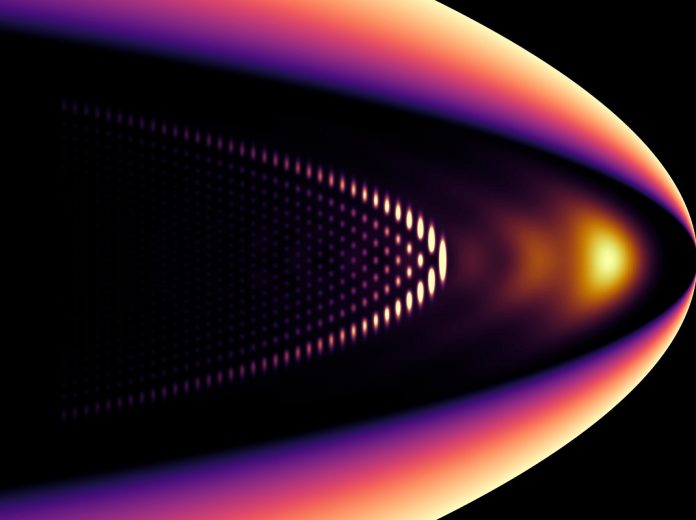
Physicists at the University of Bonn and the University of Kaiserslautern-Landau (RPTU) have successfully created a one-dimensional gas out of light particles, also known as photons.
This breakthrough has allowed them to test theories about the behavior of this exotic state of matter for the first time.
Their findings, published in Nature Physics, could help scientists explore quantum effects more closely and open the door to future technological applications.
To understand the concept, imagine standing by a swimming pool and trying to raise the water level by spraying water from a hose.
The added water would spread out across the pool’s surface, making only a small difference.
But if you sprayed the same water into a narrow gutter, the water would be trapped in one direction, causing a more noticeable wave. This wave in the gutter is a simple analogy for what the researchers are doing with light.
In the experiment, the scientists used a special container filled with a dye solution and excited the solution with a laser.
This caused photons to bounce around inside the container. As the photons collided with dye molecules, they lost energy and cooled down, eventually forming a type of “gas” made of light particles.
The key to making this gas behave in one dimension, instead of spreading out in two or three, lies in how the researchers manipulated the reflective walls of the container. They worked with tiny, high-resolution structures on the walls that acted like “gutters” for the light, trapping the photons in one-dimensional spaces.
In two-dimensional systems, there is a clear point at which the photon gas condenses, similar to how water freezes at 0°C. This is called a phase transition. However, in the one-dimensional photon gas, the situation is different.
Small temperature changes, called thermal fluctuations, have a much bigger effect in one dimension than in two. These fluctuations disrupt the order in the one-dimensional gas, smearing out the point where the gas should condense.
So instead of having a precise temperature where the light particles condense into a more solid form, the transition is less clear in a one-dimensional system. It’s as if water were to become slushy ice rather than completely freezing.
While this is still basic research, the ability to create and control a one-dimensional photon gas opens up new possibilities for studying quantum effects.
The researchers believe this work could eventually lead to new technologies based on quantum optical effects, but for now, it offers exciting insights into how light behaves under extreme conditions.
By continuing to tweak and improve the experiment, scientists hope to learn more about how different dimensionalities affect the behavior of gases and quantum systems, paving the way for future breakthroughs in quantum physics and its applications.



